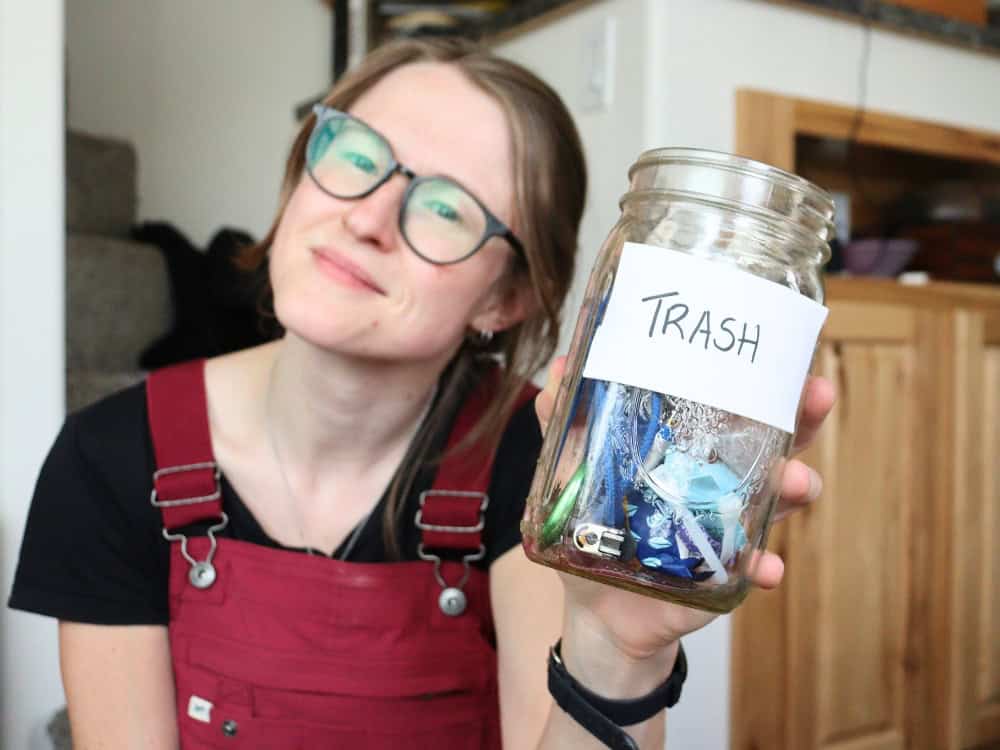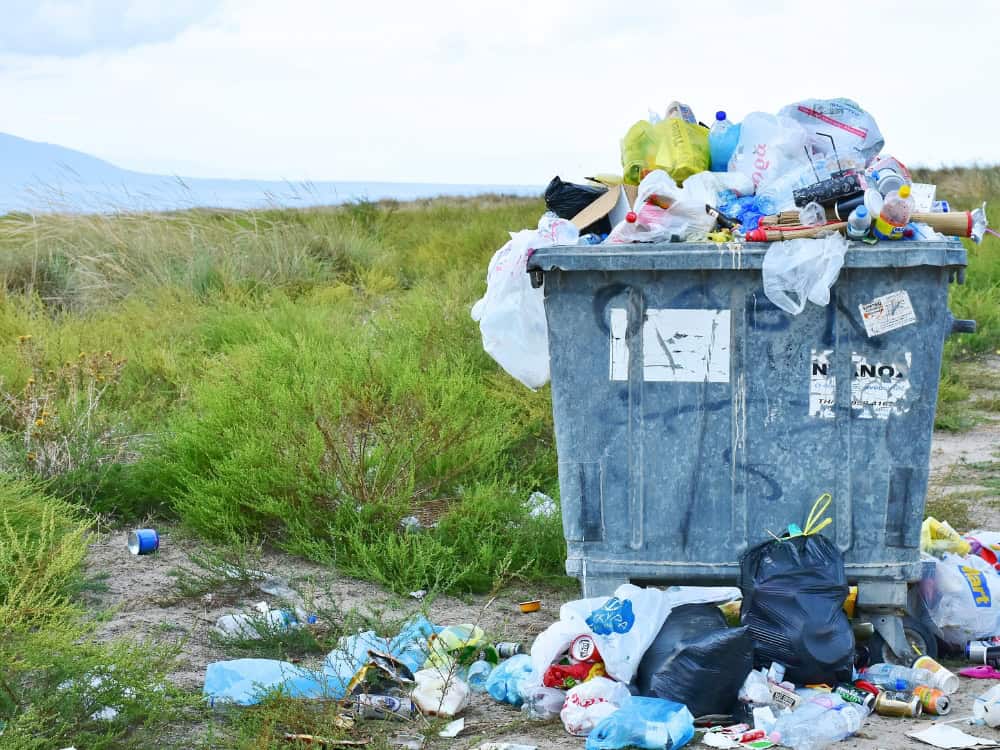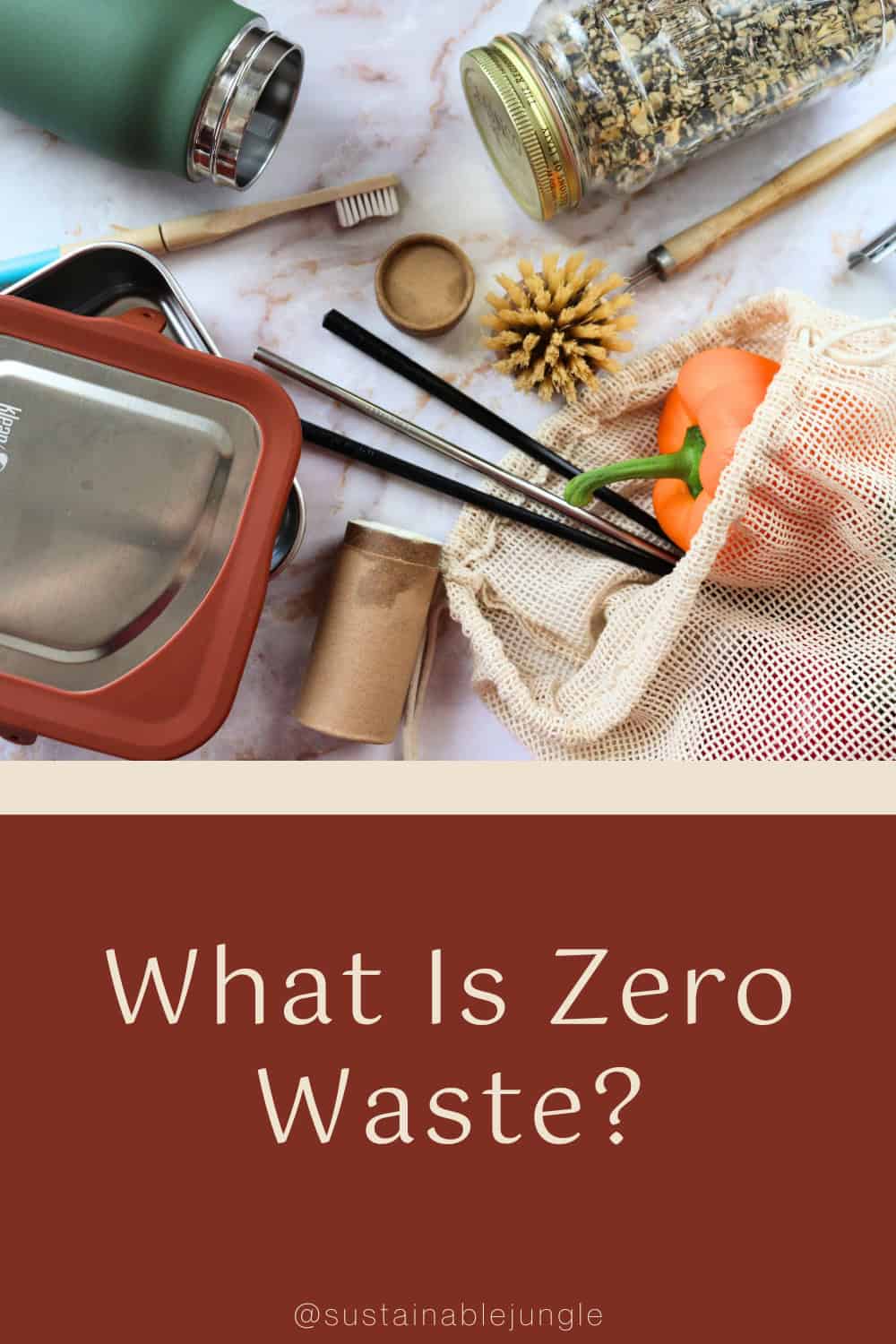
What Is Zero Waste?
Trash jars are trending. Plastic-free is popping. Reusables are all the rage. Even composting is downright cosmopolitan.
The zero waste lifestyle is getting a lot of press, but what is zero waste? What does it aim to do?
Quite simply, send nothing to the landfill. Zip. Zilch. Zero.
Of course, the real answer is far more complex than plastic = bad, because it involves a redefinition of how we see our resources flow into waste and back again. So let’s (dumpster) dive into how zero waste seeks to eliminate trash at the very source.
The Full List Of Considerations To Define Zero Waste
1. Zero Waste Definition

Despite its recent trending status, the zero waste concept actually isn’t new. The phrase dates back to the 1970s when it was (likely) coined by Zero Waste Systems Inc.
Today, the most common, internationally accepted definition of zero waste is that by the Zero Waste International Alliance.
“The conservation of all resources by means of responsible production, consumption, reuse, and recovery of products, packaging, and materials without burning and with no discharges to land, water, or air that threaten the environment or human health.”
Within this, we must understand there are two sides to zero waste: the practical side (which deals more with our actions as individuals) and the conceptual side (which deals with systematic design).
Much of the zero waste stuff we see in the press today deals with the practical side—like zero waste packaging, zero waste online stores, and bulk shopping.
Don’t get us wrong; we’re fans of all these things, too, but the future of the planet ultimately depends on something bigger. Let’s look at what zero waste means to both sides.
2. The Individual Concept Of Zero Waste

The city of San Jose, California best sums up zero waste in consumer practice: “Zero waste entails shifting consumption patterns, more carefully managing purchases, and maximizing the reuse of materials at the end of their useful life.”
Which is an eloquent way of referring to the 5 Rs of zero waste, which are:
- Refuse what you don’t need (single-use plastic, plastic grocery bags, plastic razors, coffee cups, etc.). Investing in more reusable zero waste products can help reduce your reliance on single-use items.
- Reduce what you do need (stop buying new clothes, cut back on how often you do laundry, don’t always upgrade for the latest smartphone).
- Reuse by either buying secondhand, renting, or repairing and repurposing things.
- Recycle only that which can’t be eliminated by the former three.
- Rot what’s left. The benefits of composting go far beyond just reducing landfill waste and this one has saved us personally an enormous amount of waste.
They’re essentially the order in which to reduce waste to optimize your low waste living lifestyle. If you can’t do step one, move on to the next, and so forth.
Based on the Hierarchy of Material Management, the 5 Rs are also not a new concept, though Bea Johnson of Zero Waste Home (pretty much the OG zero waster of the 21st century) is often attributed as bringing it to the public.
Let’s Talk Trash (Jars)
You may be familiar with those intimidating little trash jars promoted by some dedicated zero wasters. It’s a triumphant visual aid to prove how little garbage one can produce if they try.
The trash jar is a subject of debate among sustainability circles, because no garbage does not equal no waste. Water waste, emissions, and chemical use are all ways we can waste the planet’s precious resources.
It also makes the zero waste movement a lot more intimidating to beginners and outsiders, when in reality, you don’t need to confine a year’s worth of personal garbage to a mason jar to join the zero waste fun. Though not intentional, the trash jar promotes a message of perfection that’s simply not the reality of zero waste for most folks.
We’re proponents of progress over perfection. Going zero waste might mean incorporating one new zero waste tip into your daily routine each week, and that’s a perfectly acceptable way to approach the movement—and certainly a lot better than getting discouraged and quitting altogether because you feel like you aren’t doing enough.
But if you need a trash jar to help motivate your zero waste journey, then all the plastic-free power to you!
Recycling Vs. Zero Waste
You may be thinking, “I recycle all the time! Doesn’t that count as reducing my waste?”
To be blunt, no it doesn’t. Only 5-6% of plastics we’ve been diligently putting in those blue bins are actually recycled, so clearly, recycling is not the environmental solution we all thought it was—especially considering recycling often involves overseas shipment.
In other words, recycling is a band-aid that seeks to manage waste, whereas zero waste seeks to actually eliminate it (and entails more than just physical landfill trash). Recycling is merely a last resort of zero waste, meaning it alone is not a sufficient solution to either small or broad scope waste problems.
3. The Systemic Concept Of Zero Waste

Unfortunately, limiting our personal waste to tiny jars isn’t enough when you consider most waste occurs long before you actually buy the product or when the product eventually hits the landfill.
The average U.S. resident produces about 4.5 pounds per day—which is a drop in the bucket compared to the 292.4 million tons of municipal solid waste the US generates on the whole.
If we break out our calculator, that means US residents are responsible for about 745,000 tons of waste. So where are the other 200+ million tons coming from?
Businesses, industry, manufacturing…basically anything upstream before something reaches consumer hands. So what does zero waste mean for this type of large-scale waste?
It offers a powerful holistic solution to the problem that us ordinary consumers can’t directly influence, all the way to the very design of the products we consume—encouraging the switch from disposable to reusable, cheap to durable, and synthetic to organic.
Cradle-to-Cradle Circularity
Society currently operates via a one-way train of Extraction-Production-Consumption-Disposal. At the end of the line, products are thrown away, never to be used again. This is called ‘cradle-to-grave’.
Zero waste takes this linear industrial system and makes it a cyclical one, just as in nature itself. Think about it: nothing in nature is trash. Literally EVERYTHING is reused to create something new. By taking discarded resources and integrating them into the production system, we could realistically create a closed-loop system.
But not all materials—petroleum-based plastics, for one—are valuable resources and provide little reuse value. These must be entirely phased out of production in a zero waste system.
For such a circular economy to become a reality, we need systemic change by way of rules and regulations upholding manufacturer responsibility (both in resource extraction, product design, and production itself).
We also need a resource recovery infrastructure to replace landfills and incinerators. If you consider how few municipalities even offer commercial composting, we’re failing pretty hard at that.
4. Small Changes Create Systemic Ones

After framing it that way, it might seem like the practical side of zero waste is small potatoes compared to the big picture. Can one person actually make a difference?
YES! Your zero waste choice matters!
We definitely don’t want you to go away from this thinking your efforts are for naught. While we consumers may have little control over the industry itself, we do have control over other things that ultimately drive the industry forward. Our small choices inherently affect the direction it will go.
The brands we choose to support and products we buy inform manufacturers on what sorts of things to make. If we don’t buy cheap, disposable items, they’ll stop making them. The less we buy, the less will be made at all.
Not to beat a dying planet, but we’re running out of time to wait for the system to change itself.
The population is growing exponentially—so much that the U.N. predicts our planet will have to support 9.7 billion bodies by 2050—and our planet simply can’t support that at the current rate of resource extraction and disposal.
Zero waste is no longer optional; it’s necessary, and it starts with empowered individuals. By choosing fewer products that are less toxic, more durable, reusable and repairable, we can make it so that our throw-away culture will be the last thing that ends up in a landfill.
We’ll leave you with a list of zero waste brands and products we’ve trialed and researched over the last decade to get you started:
Did you know we Have a Newsletter?
We cover the latest in sustainable living, fashion, zero waste, beauty, travel, finance and more…
Pin these:





